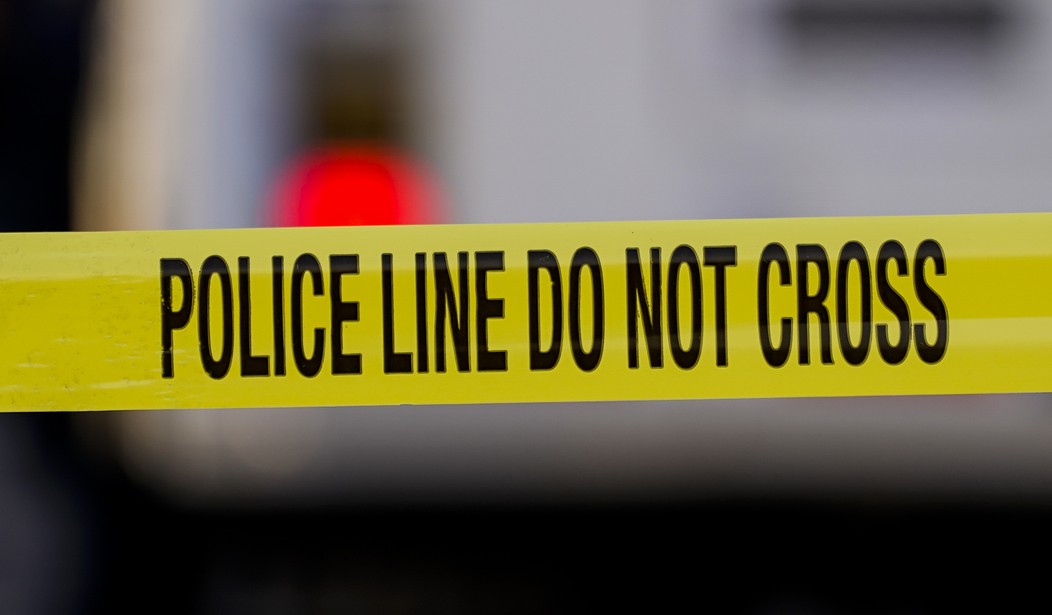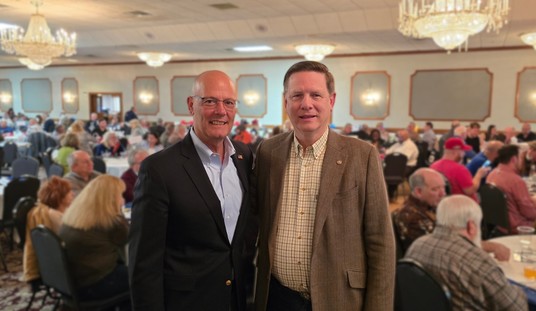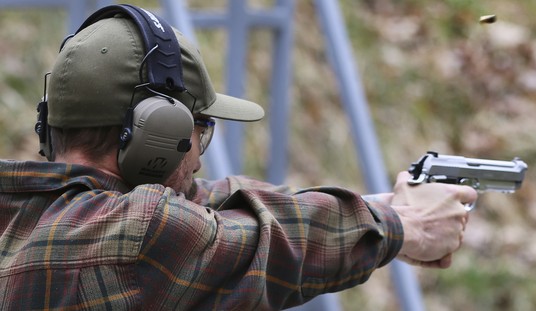For the past two years, we’ve heard a lot of arguments that the sharp increase in violent crime that began in 2020 was directly related to the similarly large increase in gun sales that started in March of that year.
Evidence for this has been lacking, to say the least, but I’ve also noticed an interesting phenomenon over the past couple of days; now that the rise in violent crime is easing in some parts of the country, that argument is being used less and less.
The New York Times’ German Lopez, for instance, didn’t mention rising gun sales as a contributing factor to rising crime in his recent column that highlighted a 4% decline in shootings nationwide and a 3% reduction in homicides in major cities, choosing instead to pin the blame on the crime spike on the effects of the COVID pandemic and the riots and unrest following the death of George Floyd in the summer of 2020.
“I would say I have a heavily guarded optimism,” said Richard Rosenfeld, a criminologist at the University of Missouri-St. Louis.
One reason for hope: The likely causes of the spike in murders in 2020 and 2021 are receding.
Disruptions related to Covid probably led to more murders and shootings by shutting down social services, which had kept people safe, and closing schools, which left many teens idle. (My colleagues Thomas Fuller and Tim Arango wrote about the connection between the pandemic and gun violence.) But the U.S. has opened back up, which will likely help reverse the effects of the last two years on violent crime.
The aftermath of George Floyd’s murder in 2020 also likely caused more violence, straining police-community relations and diminishing the effectiveness of law enforcement. That effect, too, has eased as public attention has shifted away from high-profile episodes of police brutality. A similar trend played out before: After protests over policing erupted between 2014 and 2016, murders increased for two years and then fell.
2020 was a chaotic year overall, with Covid, protests about police and a presidential election. This turmoil fostered social discord and anomie, which also could contribute to murders: As people lose trust in each other and their institutions, they are more likely to lash out in crime and violence. As the chaos recedes, the violence may be receding as well.
I find myself in the odd position of saying “I agree with German Lopez,” which I don’t think has ever happened to me before. The disruptions caused by the COVID pandemic and the response by all levels of government had a huge impact; not only on social services and policing but on the court system as well. And the riots, unrest, and calls to defund the police sparked by Floyd’s death are still having an impact today, with many police departments woefully short on officers after a flood of retirements and transfers out of many major cities.
Even in places where violent crime and homicides are still rising, there seem to be fewer academics and media-styled experts who want to pin the blame on rising gun sales. The Richmond Times-Dispatch, for example, recently ran a big feature on the rising homicide rates across the state, and while the author casually threw in this paragraph about gun sales, none of the analysts he spoke to for his piece referenced gun sales as a reason for the increase.
Virginia gun sales soared to historic levels in 2020 during a tumultuous year marked by the long-term uncertainty of COVID, the economic turmoil it brought, protests over racial injustices, and demands to defund the police. Estimated firearm sales based on mandatory criminal background checks on buyers smashed monthly records — first in March 2020 with 80,228 transactions, and again in June 2020 with 81,204 transactions.
Instead of blaming gun sales, the experts brought up the pandemic and the George Floyd riots as well.
“The pandemic absolutely played a role in a national increase in violent crime for a couple of years,” said William Pelfrey Jr., a professor and criminologist at Virginia Commonwealth University’s L. Douglas Wilder School of Government and Public Affairs. “And there’s a few explanations for that. I think the minimization of social contact and the abrogation of social networks was one piece of it.”
Pelfrey was referring to the disconnect that occurred among people — especially those living in high-crime areas — and the absence of many of the positive things they typically rely on during normal times, such as schools, churches, mentors and counseling.
Those examples were cited earlier this year by John Roman, a senior fellow in the Economics, Justice and Society Group at NORC at the University of Chicago, in a Wall Street Journal article on the reasons for the national surge in homicides.
“The overarching explanation for the increase in violence over the last two years is the pandemic,” Roman said.
… The sizable reduction in the ranks of police officers available to enforce the law — particularly in large cities — may have had a much greater impact than a police pullback, Pelfrey noted.
“So post-George Floyd, policing became a less desirable job,” he said. “And many big city police departments have seen significant increases in officer departures. Those numbers have gone way up. It’s usually about 5% a year; now, it’s more like 10 to 15%. And police agencies are having a real hard time recruiting and hiring new officers. Richmond is an example of that.”
Consequently, having fewer officers usually results in less proactive policing, Pelfrey said.
“And if you couple that with a reluctance by police to go out and look for offenders as a result of the pandemic, or the post-George Floyd protests, then you’ve got fewer police officers on the streets — with some less inclined to do proactive work,” he said. “And that could contribute to an increase in violent crime. That’s a really hard thing to measure, but it’s the kind of thing that makes sense.”
The number of homicides exploded in five of Virginia’s largest cities, including Richmond, from the pre-pandemic year of 2019 to 2021.
Killings rose 61% in Richmond, from 56 in 2019 to 90 last year — a 17-year high. They surged even higher in four other Virginia cities, spiking 75%, 80%, 125% and 257%, respectively, in Norfolk, Hampton, Portsmouth and Chesapeake, between 2019 and 2021, state crime data shows.
There’s evidence that the rise in shootings and homicides may have peaked in Virginia as well. Both categories have plateaued in Richmond compared to last year’s crime stats, and homicides are down in Norfolk compared to last year, too, though not in nearby Virginia Beach and Portsmouth.
If gun sales were truly the driving factor in the rising rates of crime over the past couple of years, we wouldn’t be seeing a slowing or a decline in the number of murders and non-fatal shootings. Instead, we’d expect that number to continue to rise month after month. It’s not like the roughly 23 million guns sold in the U.S. in 2020 have disappeared, after all. In fact, we added another 19 million last year and are on pace for more than 13 million this year. If more guns equals more crime, things should be getting much worse. Instead, we’re starting to see signs of a slowdown, at least in fatal and non-fatal shootings. It makes sense that fewer “experts” outside of gun control activists are still embracing the idea that gun sales were to blame because it doesn’t comport with reality.
Whether or not this slowdown continues or turns into a sustained decline depends on a number of factors; most importantly the ability to have a fully functioning criminal justice system. There are staffing shortages from frontline officers to public defenders, which is leading to declining clearance rates for major violent crimes (including murder) and fewer prosecutions for serious offenses. We could easily see the modest reductions in violent offenses over the past few months turn into big spikes in the future unless we’re willing to address the nuts and bolts of our public safety policies, and with Democrats deciding to ban guns instead of funding police (though they’ve got plenty of money available to hire 87,000 new IRS agents), Americans are going to need to ride a red wave come November if we’re going to truly put an end to the crime spike that started two years ago.









